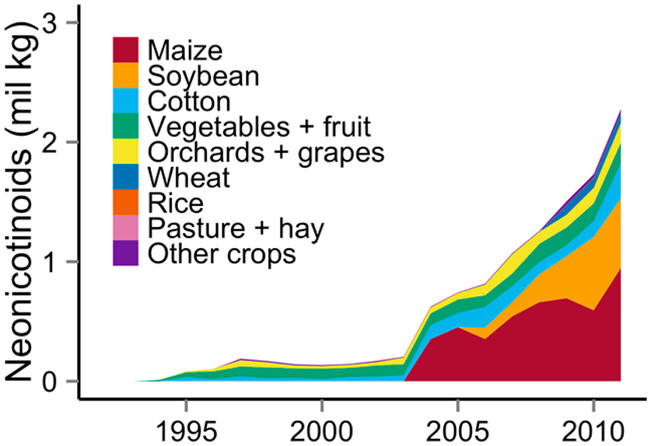Neonicotinoids are the most widely used class of insecticides worldwide, but patterns of their use in the U.S. are poorly documented, constraining attempts to understand their role in pest management and potential nontarget effects. We synthesized publicly available data to estimate and interpret trends in neonicotinoid use since their introduction in 1994, with a special focus on seed treatments, a major use not captured by the national pesticide-use survey. Neonicotinoid use increased rapidly between 2003 and 2011, as seed-applied products were introduced in field crops, marking an unprecedented shift toward large-scale, preemptive insecticide use: 34−44% of soybeans and 79−100% of maize hectares were treated in 2011. This finding contradicts recent analyses, which concluded that insecticides are used today on fewer maize hectares than a decade or two ago. If current trends continue, neonicotinoid use will increase further through application to more hectares of soybean and other crop species and escalation of per-seed rates. Alternatively, our results, and other recent analyses, suggest that carefully targeted efforts could considerably reduce neonicotinoid use in field crops without yield declines or economic harm to farmers, reducing the potential for pest resistance, nontarget pest outbreaks, environmental contamination, and harm to wildlife, including pollinator species.
Source:
Margaret R. Douglas and John F. Tooker (2015) Environ. Sci. Technol. DOI: 10.1021/es506141g

- Login om te reageren
